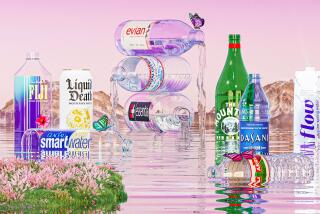Peel away the complications of the perfect hard-boiled egg
- Share via
Sometimes it’s the simplest things that are the most confounding. Last year, right before Easter, I blogged about how to make a perfect hard-boiled egg. Basic? Yes. Popular? Very. This seemingly simple task received tens of thousands of page views.
And, it seemed, almost as many complaints: “But how do you peel them?”
Mea culpa. while my method ensures that hard-boiled eggs are never overdone (at last: the cure for the dreaded copper-green ring!), it also can make them harder to shell, because perfectly cooked eggs turn out to be stickier than ones that have been overcooked.
So this year I determined that I would find the absolutely perfect way to cook hard-boiled eggs you could actually peel. I spent a couple of days researching and cooking though several dozen eggs and found that the answer is surprisingly simple.
While overcooking hard-boiled eggs does have its obvious drawbacks — rubbery dry whites and pale crumbly yolks — it actually does make them easier to peel. That’s because one of the determining factors in peel-ability is the pH of the egg — the higher (less acid), the easier. And longer cooking raises the pH (so does aging — and older eggs also have a larger air pocket, which helps even more).
But you don’t have to choose between easy-to-peel eggs that aren’t worth eating and delicious eggs that are as pocked and cratered as the surface of the moon.
Do a little research and you’ll find all sorts of solutions, some more fanciful than others: Cool the eggs in an ice water bath. Cook them in salted water. Add baking soda to the water (baking soda is alkaline, so theoretically it could raise the pH).
I settled on four alternatives that seemed to be most promising. I added salt to one batch of eggs and baking soda to another. I transferred another batch to an ice water bath whole, and another I cracked slightly after cooking but before going into the bath.
And just to make sure I wasn’t imagining things, I also cooked one batch the original way, trying to crack them straight out of the warm water.
What didn’t work? Salting made no difference in peel-ability and didn’t affect the flavor, either. Which was actually better than the baking soda, which made no difference in peeling but left the eggs with a noticeable sulfur smell.
The ice water bath turned out to be the key. Eggs chilled while whole seemed slightly easier to peel. But the real winners were the eggs that had been cracked before going into the ice water. They were by far the easiest to peel.
Just drain off the water and roll the eggs around in the dry pan until the shells crack slightly. Then transfer them to an ice water bath.
Actually, unless you’re in a hurry, you don’t even need to crack them. When I was done with my experiment, I dumped all the remaining unpeeled eggs into the ice water bath while I ate my lunch. When I came back 45 minutes later, they were all easier to peel — the shells are porous. Given enough time, the ice water will seep into the egg, even without the cracking.
Sometimes simple problems really do have simple solutions.
More to Read
Eat your way across L.A.
Get our weekly Tasting Notes newsletter for reviews, news and more.
You may occasionally receive promotional content from the Los Angeles Times.







